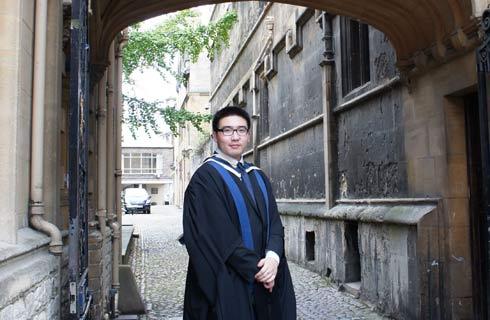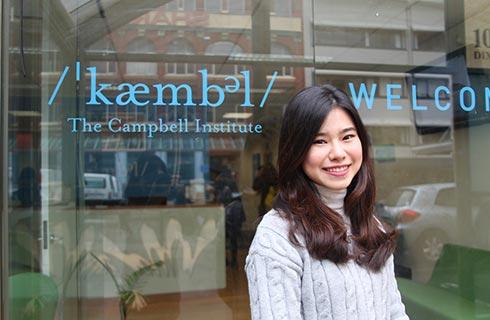天文学哲学博士
Doctor of Philosophy in Astronomy

学历文凭
Ph.D.

专业院系

开学时间

课程时长

课程学费

国际学生入学条件
Caltech does not have a minimum GPA requirement. However, most successful applicants have a US GPA of at least 3.5 on a 4.0 scale and/or are in the top 5 to 10% of their class. Applicants whose first or native language is not English are asked to demonstrate English proficiency as part of the application procedure. Caltech recognizes scores from the Educational Testing Service (ETS), Pearson's Test of English Academic (PTE)
IDP—雅思考试联合主办方

雅思考试总分
了解更多
雅思考试指南
- 雅思总分:
- 托福网考总分:60
- 托福笔试总分:160
- 其他语言考试:NA
CRICOS代码:
申请截止日期: 请与IDP顾问联系以获取详细信息。
课程简介
The Caltech Astronomy graduate program aims to prepare students for creative and productive careers in astrophysical research and to train the next generation of leaders in the field. While the vast majority of our graduate students come from undergraduate astronomy or physics programs, some arrive with related majors such as engineering. In addition to those admitted directly to Astronomy, students in Physics who have astrophysical interests may conduct research with Astronomy or Physics faculty. Conversely, Astronomy students may also take the opportunity to work with faculty in either department. Also during their first or second year, students focusing on observational astronomy take the Astronomical Measurements and Instrumentation sequence and four courses in physics or another appropriate subject. Theory students, on the other hand, select six classes in physics, mathematics, or other applicable fields. All first-year students participate in Introduction to Modern Research which exposes them to available research opportunities.
相关申请
 预科
预科 奖学金
奖学金 实习机会
实习机会 在校学习
在校学习 跨境学习
跨境学习 校园授课-线上开始
校园授课-线上开始 在线/远程学习
在线/远程学习
学校排名

世界排名5
数据源:泰晤士高等教育世界大学排名
关于加州理工学院

如果你的SAT成绩很不错,喜欢学习数学、科学或者工程方面的知识,并且有独立的研究经历、有已经发表的论文,那么你可以试着申请加州理工。Caltech是世界上最好的理工大学之一。在物理、行星科学、地学领域被公认为全美第一。此外,化学、航空航天、生物科学、电子工程、数学等专业的学术排名也一直位居全美前十位。 加州理工本科人数不超过1000人,与其它旗舰级的综合性大学相比,这看似渺小的数字背后,蕴藏着无限的天赋和聪慧。如果你有幸成为Caltech每年招收的200个大一新生之一,请做好你前后左右都是科学天才的思想准备。加州理工不大的校园里竟然容纳了50多个高级研究中心,研究领域涵盖人工智能,化学,地震学等等。此外,NASA的喷气推进实验室和夏威夷的凯克天文台也属于Caltech的外地实验室,后者更是配备了世界上两个最大的光学与红外望远镜!将近4亿美金的研究合同经费保障了Caltech无论在人力还是设备上都能够始终位于科技的最前沿。自1980年以来,Caltech已经拿到了超过2000个美国国家级专利! 即使你不想追随另外31名校友的脚步去夺下某个领域的诺贝尔奖,单从Caltech顺利毕业已经足够保障你的后半生丰衣足食。2012年加州理工毕业生的平均年薪是惊人的82000美元!55%的学生可以拿到奖学金,金额全额满足学生的要求。300位教职员工中有三分之一是美国国家科学与工程学院的会员。说到这里,你应该自己就能算出Caltech的师生比了吧—1:3,对,这就跟请一个诺贝尔奖得主给你做家教差不多了!
本校相关课程
其他相关课程

天文学学士学位
 纽约州立大学新帕尔兹分校
纽约州立大学新帕尔兹分校学历文凭
Bachelor Degree
开学日期
课程费用总额


Bachelor of Science in Astronomy
 乔治梅森大学-INTO USA
乔治梅森大学-INTO USA学历文凭
Bachelor Degree
开学日期
课程费用总额


天文学理学硕士
 圣玛丽大学
圣玛丽大学学历文凭
Masters Degree
开学日期
课程费用总额


Master of Science in Astronomy (Non-Thesis Track)
 内华达大学拉斯维加斯分校
内华达大学拉斯维加斯分校泰晤士高等教育世界大学排名:776
学历文凭
Masters Degree
开学日期
课程费用总额


天文学硕士
 波士顿大学
波士顿大学泰晤士高等教育世界大学排名:76
学历文凭
Masters Degree
开学日期
课程费用总额


Doctor of Philosophy in Physics and Astronomy
 普渡大学
普渡大学学历文凭
Ph.D.
开学日期
课程费用总额
































